
The Afshar people are descendants of Turkic clans from central Asia.
Over the centuries, they migrated settling down in the areas from the Caucasus to the plateaus of southern Iran.
‘ … , the Afshar are perhaps the oldest of the Turkic tribes. They are scattered now into most areas around Iran, with the largest concentration in western Kerman province. Their lifestyle has remained largely the same for 1000 years.’[i] They are famous for exquisite rugs in a wide range of designs.
[i] Parvis Tanavoli On Afshar Rugs By Jim Adelson
As of the more recent census, the largest concentrations of the Afshar tribes in the county’s are north west, with small communities inhabiting Iran’s north east (Khorasan) and some in the Kerman province. Each of these regional groups produce distinct work of weaving arts.

Just like many Persian nomadic tribes of Turkic origin, the Afhar are tent-dwellers. Their primary occupation is sheep husbandry and handicraft such as many ornamental weavings: saddlebags (khoorjin), salt bags (namakdan) and flat-weaves (jajim, ghelim) better known in the West as kilims.[1] They are however best known for their superb carpets in an array of eclectic designs.
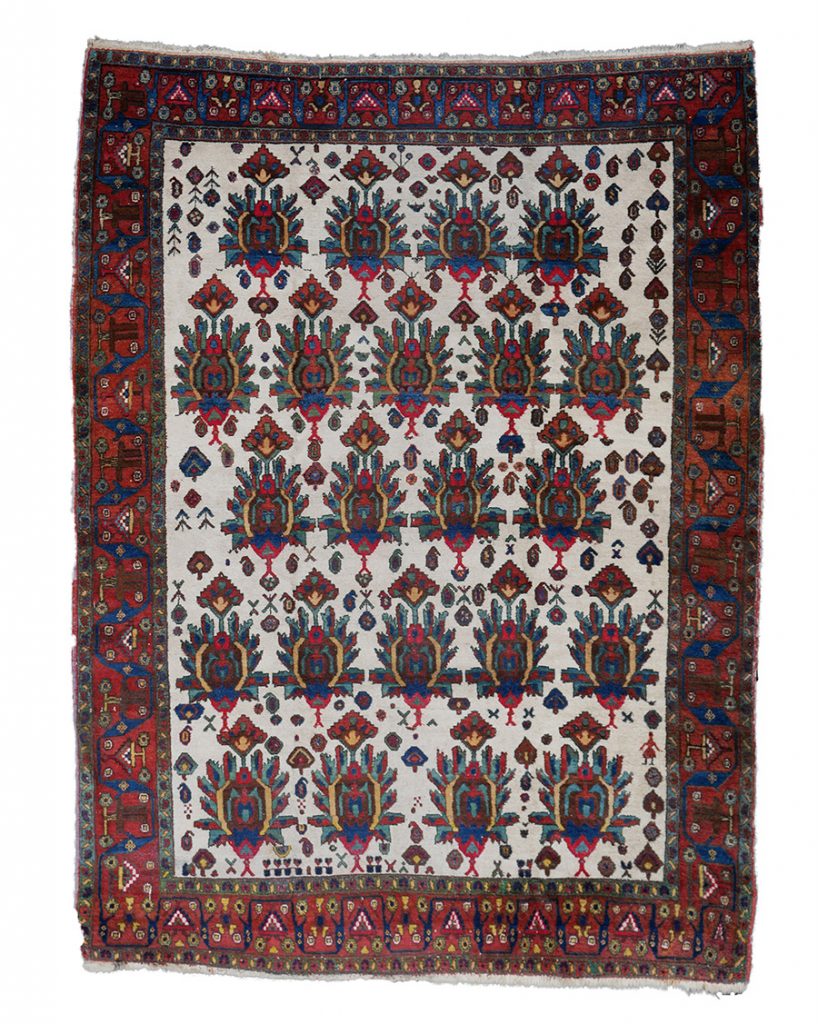
Perhaps not the largest but certainly bettern known and more prolific concentration of the Afshar clans is in the Kerman province, Baft being their central marketplace.

Their best-known carpets in fact are made by and tribeswomen[i] in
southern Iran’s Kerman and Hormozgan provinces.
[i] Tanavolia observed that “women do all the work; men sit around and smoke.”
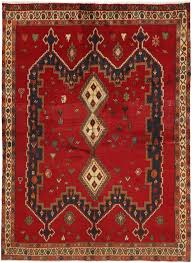
Most Afshar carpets display stylized geometrical patterns in a wide range of colours. Their designs may be unpredictable and eclectic.
They are valued world-wide as quality tribal artifacts.
Some Afshar rugs resemble Khamseh works, and often in fact are mistaken for such. Here is a priceless advice from Jim Adelson

‘According to Opie, “Woolen warps and wefts predominate in Afshar work until cotton was adopted in the 1930s. Wool warps are almost invariably ivory in color, though minor admixtures of darker wool or goat hair are occasionally found. . . . Wefts are commonly dyed red, sometimes with a decidedly orange tinge which distinguishes them from Khamseh work.” ‘
When on the look-out for an antique Afshar rug, a number of considerations out to be made. Most Afshar rugs on today’s market are very well made; they are typically colourful with wool being soft and shiny.
The patterns of Afshar rugs are also quite eclectic. They will typically be hand-knotted (Ghiordes knot) on white cotton foundation.
The older Afshar rugs (pre-1930[1]) are all wool and perhaps these early 20th century rugs should be considered when investing in tribal rugs.
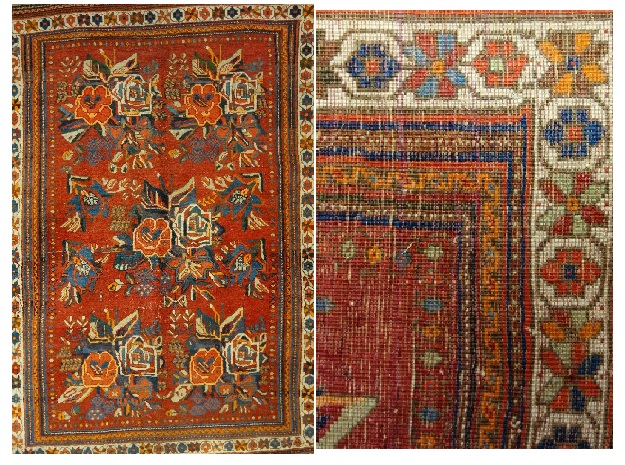
The above-featured rug, displays a very old pattern, the French Rose (gϋl frange) popular in Persian from late 19th century onward.
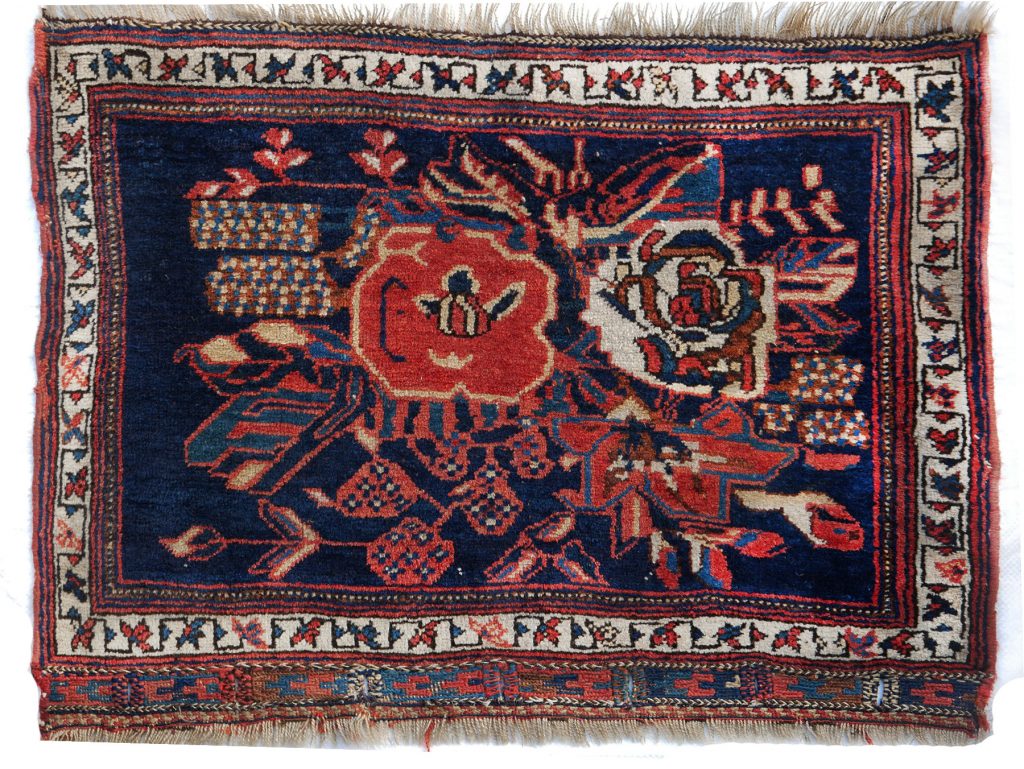
[1] Both the Afshar and the Bahtiari (independently) adopted cotton as their preferred foundation material around the 1930s
Here is another example of a pre-1930s Afshar rug is small pushti (pillow) format from a private collection.
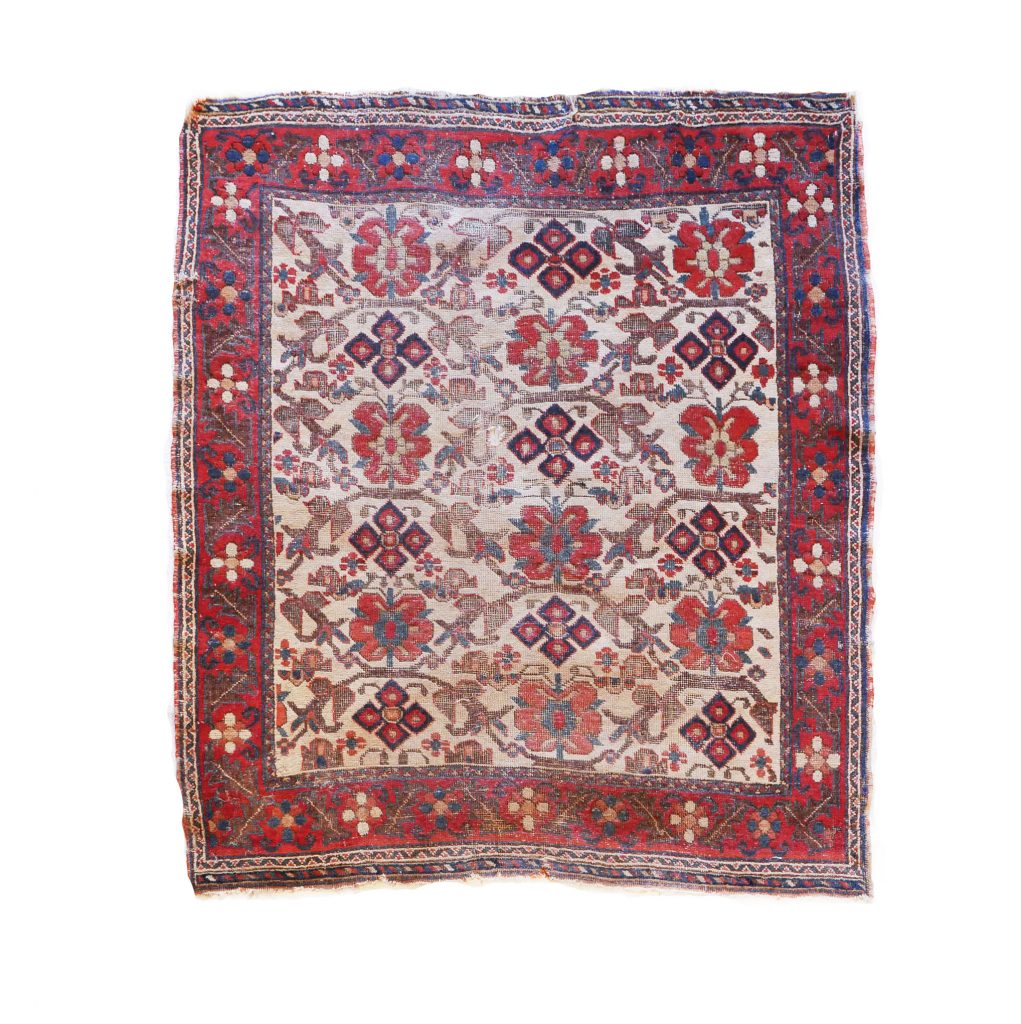
A.G.
[1] The Turkish name kilim is widely adopted in the Western world in reference to hand-woven tribal textiles, the names of which vary from ghelim in Iran or mandour in Morocco. The origin of the name kilim or ghelim may be traced back to ancient Aramaic where the word ghalim denotes a blanket.
Quotations about Afshars from Parvis Tanavoli On Afshar Rugs by Jim Adelson

Excellent!!
Do you have any type of tips for composing posts? That’s where I constantly struggle
and I simply wind up looking empty screen for long time.
This is actually useful, thanks.
Thanks for the terrific article
Can you inform me what system are you making use of on this internet site?
Thank you
Thank you
I think it is WordPress
I am not sure where you’re getting your info, but great topic.
I needs to spend some time learning more or understanding more.
Thanks for excellent information I was looking for this info for my mission.
Thank you for your kind comment
You are very welcome and good luck learning .. It is a fascinating field
Thank you. I am not an expert but a learner. I love rugs and love sharing the passion for this important man and womankind’s intangible heritage
Thank you very kindly